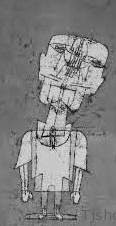
Clarity about these matters ...
Philosophy, Bayesian inference, statistics and all that.
"Philosophy matters to practitioners because they use philosophy to guide their practice; even those who believe themselves quite exempt from any philosophical influences are usually the slaves of some defunct methodologist."
"We fear that a philosophy of Bayesian statistics as subjective, inductive inference can encourage a complacency about picking or averaging over existing models rather than trying to falsify and go further."
In other words, do not look for a Bayesian super-intelligence, but (try to) learn from your mistakes and fail in interesting ways.
update: The authors blog about it here and there.
arXiv or viXra ?
Recently, there was some fun with arXiv vs. snarXiv, where arXiv is of course the place where serious physicists store their papers and snarXiv is a random paper generator.
But there is also viXra.org, a self proclaimed 'alternative archive of 1072 e-prints in Science and Mathematics'. As an example, take a look at the paper Logic: a Misleading Concept, which kind of sets the tone for the rest.
In the following I present to you four abstracts and the challenge, should you accept it, to distinguish arXiv from viXra. The first who can assign them correctly (in the comments) wins a golden llama award with a free subscription to this blog for a whole year. Here we go ...
1) Many people believe that mysterious phenomenon of consciousness may be connected with quantum features of our world. The present author proposed so-called Extended Everett's Concept (EEC) that allowed to explain consciousness and super-consciousness (intuitive knowledge). Brain, according to EEC, is an interface between consciousness and super-consciousness on the one part and body on the other part. Relations between all these components of the human cognitive system are analyzed in the framework of EEC. It is concluded that technical devices improving usage of super-consciousness (intuition) may exist.
2) Vafa's (11+1) F theory is extended by means of Bars' 2T holographic theory to yield a 14d Multiverse theory that permeates the brane of a 12d Universe in which both the Universe and the Multiverse have (3+1) spacetimes. Given the 2d toroidal compactification of F theory, we conjecture that the Multiverse has a 4d Cartesian compactification that is filled with 3D+T spacetime via the standard 6d elliptic Calabi-Yau compactification, as in both M and F theory. The result is exemplified using supermassive black hole cosmology.
3) The study of the so called brane world models has introduced completely new ways of looking up on standard problems in many areas of theoretical physics. Inspired in the recent developments of string theory, the Brane World picture involves the introduction of new extra dimensions beyond the four we see, which could either be compact or even open (infinite). The sole existence of those new dimensions may have non trivial observable effects in short distance gravity experiments, as well as in our understanding of the cosmology of the early Universe, among many other issues.
4) We propose a derivation of the empirical Weinberg relation for the mass of an elementary particle in an inflationary type of universe. Our derivation produces the standard well known Weinberg relation for the mass of an elementary particle, along with an extra term which depends on the inflationary potential, as well as Hubble's constant. The derivation is based on Zeldovich's result for the cosmological constant Λ, in the context of quantum field theory. The extra term can be understood as a small correction to the mass of the elementary particle due to inflation.
-------
The proud winner is cherez who can now read this fine blog for another year for free while looking at the golden llama, knowing that he can tell arXiv from viXra. Congratulations!

Links to the four papers are in the comments.
one pipe, many worlds
Some people claim that they have seen the image of a pipe on this blog. Obviously, there are many different ways how such an image could have been observed in the many worlds we live in, but in this world there is only one way how it could not have appeared.
So what does this tell us about probabilities?
PS: If you want to think even more about probabilities and many worlds, I recommend this paper and in particular the sections about some toy many-worlds models and
about 'the problem of inappropriate self-importance'.
-----
added later: In my previous example a quantum experiment has two possible macroscopic outcomes, e (espresso) and n (no espresso), and the probability for each is 50%, although e can be realized in N different (macroscopic) ways, while n can be realized in only one way.
Now, one could argue that in both cases the observer does not immediately experience a conflict with the 50% Born probability (the observer in one world e or n does not experience all the other worlds). Therefore we need to consider iterating this experiment.
If the experiment is repeated R times, then observers who see the outcome eeeeeeeee...eeeeee will indeed conclude that something is very wrong. Unfortunately, they are the overwhelming majority with N^R worlds and I would really like to understand how this can be reconciled with e.g. the Deutsch-Wallace interpretation of probability.
Subscribe to:
Posts (Atom)
